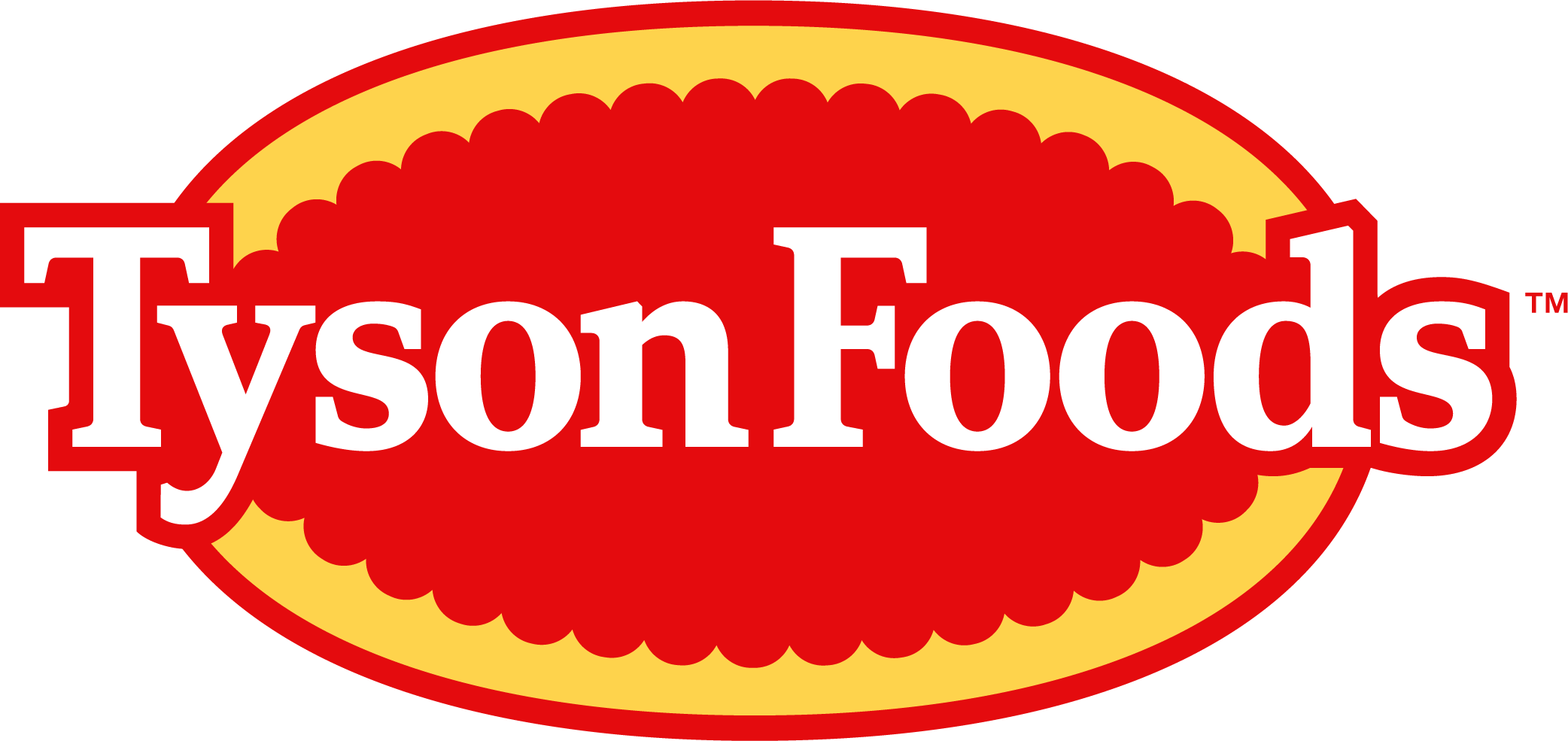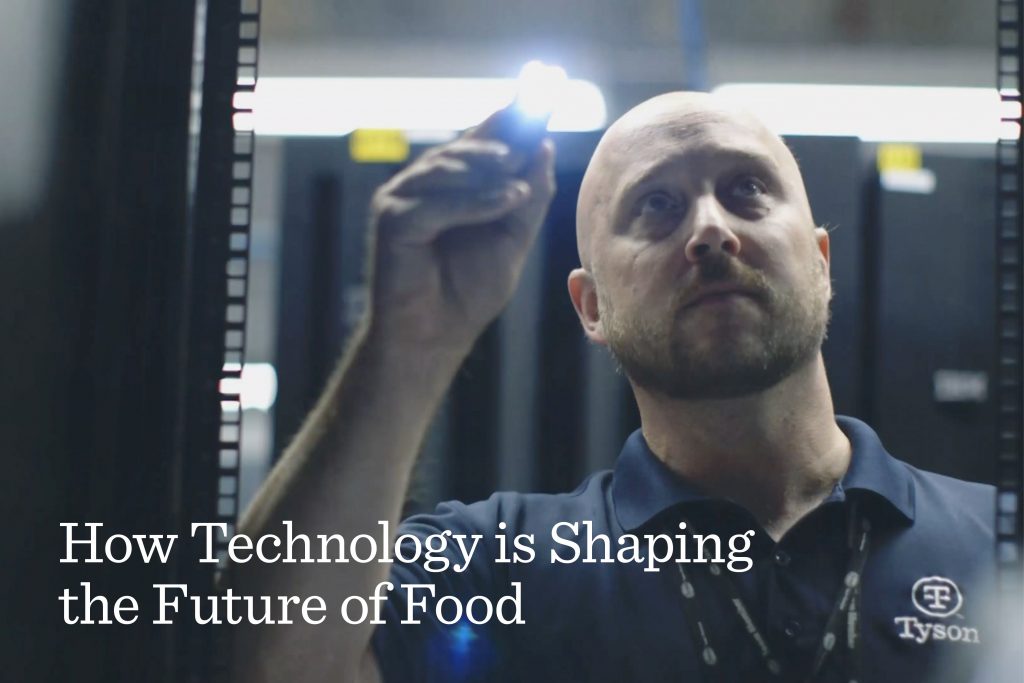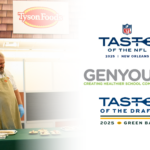The Northwest Arkansas Technology Summit was recently held virtually, featuring Tyson Foods President and CEO Dean Banks and Executive Vice President and Chief Technology Officer Scott Spradley.
Their discussion focused on the transformation of Tyson Foods and how technology is shaping the future of food. The following Q&A is an excerpt of their talk.
What does digital transformation look like for Tyson Foods?
Dean: Tyson Foods and many of the Fortune 500 companies are in a pole position to take advantage of technological developments that we see very minimally utilized across corporate America. And there’s not really an industry more suited than farming, if you think about my grandpa running a horse-drawn plow.
Back then, they could only impact their own plot of land on their own farm, only as much as their legs or their horse could carry. Information technology today allows us to dramatically expand the scale and scope of things an individual can do, the things we can manage, the things we can sense, the things we can automate that can allow us to dramatically expand how many people we can help with food.
Scott: When you start talking about digital transformation, a lot of people get caught up in the buzz words. They don’t really reconcile what it means to digitally transform. So, when you take a company that’s got an 85-year history that was largely born analog, somebody with a clip board, and maybe they’re drawing a process there and that becomes an integrated process.
You really have to break it down into components, and you have to start looking at some of the things that enable the future of technology. When I arrived, one of the first things we did was consolidate onto a single enterprise platform so we could run transactions consistently. The construct of scale is a big deal. We are really the preeminent provider of protein, and our opportunity is to become the world preeminent provider of protein.
To do that, we’ve got to get some of this foundation done right. We’ve moved forward from there to developing predictive capabilities. We can look at how much of something is going to be consumed.
We’ve brought in computer vision, we’re looking at ways we can do something faster, better and improve the quality at a lower cost and higher speed because it’s all about scale.
What do you think the protein industry will look like 5 to 10 years from now if technology continues to be implemented at the current pace?
Scott: I believe in five years you’re going to see significant changes. You’re going to see more drone-based delivery. You’re going to see machine learning and robotics everywhere. You’re going to see computer vision doing things.
And that’s what we’ve got to be careful about. Quality cannot be compromised. Shortcuts that are onset by digital transformation can lead to dissipation of quality. How can we apply a continuous improvement mindset to the digital transformation so that the quality continues to be refined, the speed continually improves, and the cost is sustainable as well as the sustainability of the product that goes into the food? The next five years are going to be epic.
Dean: Tyson Foods and many agriculture companies are struggling to connect with consumers because we’ve urbanized and suburbanized. People have gotten further and further from the farm. There’s a desire to reconnect with where your food comes from.
Today, you can go to a farm to fork restaurant and see the list of farmers in your neighborhood who have provided the ingredients you are enjoying. That creates a feeling of intimacy. In the future and with the help of technology, we can better connect with consumers through more immediate, flexible and customizable food production.
What role is automation and technology playing in meat production, and how will this affect the staffing of our facilities?
Scott: People always say, “let’s talk about robots” right off the bat. But what are robots going to do? Are we going to be seeing robots deboning chicken? Right now, it’s pretty hard to beat the human. The human is very dexterous.
So, how can we improve dexterity? Well, you can have MRI images of everything that comes down the line, and the computer with machine learning is going to look at that image and be able to know exactly and precisely where to make that cut. Well, that’s not going to happen real quick. It’s going to take a little bit of time.
Predicting is also a big thing. How much we’re going to need and how much we’re going to need to feed the animals we produce. That’s a big part of that. How much needs to be where, when it needs to be where. That’s another component.
Then, there are things like safety. You think about somebody having to lift and carry something that’s really heavy. That’s a little bit easier on the robotics side, and it’s better for our workforce to relieve them from that kind of burden.
Dean: I toured one of our plants here in Northwest Arkansas early in my days when I was working with Tyson through Google. One of the plant managers said something really powerful to me. He mentioned that they’ve been automating and adding new technology for decades, and they’ve never laid off a person.
What was happening was they were dramatically expanding the capacity and the quality of the products and the scale and scope and the types of products they could accommodate, the flexibility they could offer through technology. That was really inspiring to me.
When I think about 10 billion people being on the planet in 30 to 50 years, and how we’re going to sustainably feed them, I can’t imagine being at a better place than here at Tyson Foods and here in Northwest Arkansas.
What would be one thing you want people to remember about Tyson Foods’ use of technology?
Scott: I think we’re progressive and ahead of others in the industry. We’re dedicated to improving life for our team members, and technology is helping us do that.





